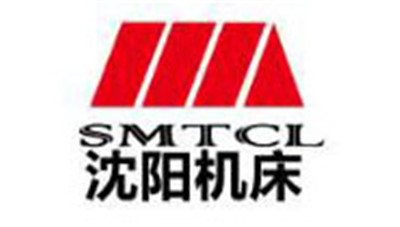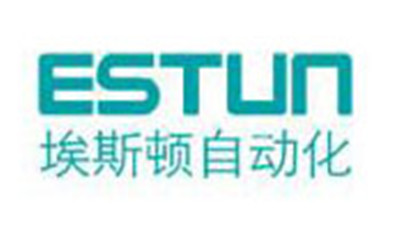Understanding the Challenges Faced with Converter Transformers in Industrial Applications
Table of Contents
- Key Functions of Converter Transformers in Industrial Environments
- Common Challenges Encountered with Converter Transformers
- Benefits of Optimizing Converter Transformers for Enhanced Performance
- Technological Advancements in Converter Transformer Design and Application
- Best Practices for Maintenance and Troubleshooting in Converter Transformers
- Powering Efficiency: The Essential Role of JBK Industrial Control Transformers in Modern Automation
- FAQS
- Conclusion
- Related Posts
 Converter transformers really play a crucial role in the world of electrical engineering, especially when it comes to industrial settings where you really need things to be efficient and reliable. I mean, if you look at the latest industry report from MarketsandMarkets, it’s clear that the global market for converter transformers is set to grow quite a bit. Thanks to the rising demand for renewable energy sources and electric vehicles, things are heating up in this sector. Here at Dezhou Xinping Electronics Co., Ltd., we understand just how tough it can be to design and produce these high-precision electronic transformers—especially converter transformers that need to handle heavy operational demands day in and day out.
Converter transformers really play a crucial role in the world of electrical engineering, especially when it comes to industrial settings where you really need things to be efficient and reliable. I mean, if you look at the latest industry report from MarketsandMarkets, it’s clear that the global market for converter transformers is set to grow quite a bit. Thanks to the rising demand for renewable energy sources and electric vehicles, things are heating up in this sector. Here at Dezhou Xinping Electronics Co., Ltd., we understand just how tough it can be to design and produce these high-precision electronic transformers—especially converter transformers that need to handle heavy operational demands day in and day out.
We started out back in March 2001, and ever since, we've been all about coming up with innovative solutions and delivering top-notch products. Our goal? Making sure our clients can have full trust in the performance and durability of their electrical systems—that’s what drives us every day.
Key Functions of Converter Transformers in Industrial Environments
Converter transformers might not be the sexiest topic around, but honestly, they’re kinda the unsung heroes in lots of industrial setups. Basically, they help switch electrical energy from one form to another, mainly when dealing with those super high voltages you see in big operations. They’re a big deal in renewables, too — think wind farms and solar projects — where the power generated has to switch from AC (that’s alternating current) to DC (direct current) so it can fit into the grid smoothly. I read somewhere that, according to the International Energy Agency, the need for converter transformers is expected to grow around 6% each year up until 2030. That’s mainly because we’re all moving towards more electrification and, of course, trying to go greener with sustainable energy sources.
But it’s not just about flipping the current. These transformers are built tough to handle the messy realities of industrial environments — things like load swings and those sneaky harmonics that can cause overheating and mess with efficiency. If you don’t design them right, those harmonics can really cause problems, so precision and quality matter a lot. Some recent studies suggest that just how efficient a transformer is can affect the entire system’s performance by up to 10%. That might not sound like much, but it’s huge when you’re talking about big, complex power setups. Luckily, manufacturers are now using newer materials and smarter engineering tricks to make these transformers more reliable and environmentally friendly, helping industries cut down their carbon footprints while keeping everything running smoothly.
Common Challenges Encountered with Converter Transformers
Converter transformers really are a big deal in industrial settings, especially when it comes to changing electrical power from AC to DC. But let’s be honest, using them isn’t always smooth sailing. One of the biggest headaches? Managing all that heat they produce. Because of their design and how hard they work, these transformers get pretty hot, and if you don’t keep things cool, their performance and lifespan can suffer. That’s why you’ve gotta have good cooling systems in place—otherwise, things can go south pretty fast.
Then there’s the pesky electromagnetic interference, or EMI for short. The high-speed switching inside these transformers can create electrical noise that messes with nearby equipment. Not only does that make the whole system less reliable, but it also means you might need extra filters or protective gear, which just adds to the complexity. So, designing these setups really needs some careful planning to keep EMI in check while still making sure everything runs smoothly, no matter what conditions you’re working in.
And let’s not forget about maintenance — dealing with these transformers isn’t exactly a walk in the park. Because they’re pretty complex, spotting issues or diagnosing problems takes more effort compared to regular transformers. Keeping up with regular checkups is crucial; if you ignore it, small problems could turn into costly breakdowns. That’s why having skilled tech folks and the right diagnostic tools makes all the difference. Bottom line: keeping converter transformers running efficiently and reliably definitely requires some know-how and attention to detail.
Challenges Faced with Converter Transformers in Industrial Applications
This bar chart illustrates the common challenges encountered with converter transformers in industrial settings, including efficiency, thermal management, and maintenance requirements.
Benefits of Optimizing Converter Transformers for Enhanced Performance
Converter transformers are pretty crucial when it comes to industrial stuff—they make sure energy gets converted and distributed efficiently. With all these new, more complex transformer designs popping up, it’s really important to tackle challenges like how fast they process info and how much memory they need. Recently, there’s been cool progress, like the development of high-performance transformer oil, showing that the industry is really pushing to make these components work even better. In fact, some reports suggest that tweaking transformer designs could boost efficiency by up to 15%, which means less energy wasted and more savings all around.
If you're looking to get the most out of converter transformers, trying out new circuit configurations that meet the rising energy needs—for example, in places like data centers—can make a huge difference. As tech keeps advancing and power consumption shoots up, it’s definitely time to recheck our standards for how efficient these transformers really are. Don’t forget, regular maintenance and swapping out oils and parts on time can keep things running smoothly. And if you really want to be on top of things, investing in smart monitoring systems helps you catch issues early and tweak settings in real-time, saving headaches down the line.
All in all, understanding and improving transformer efficiency isn’t just about saving money—it’s also about making sure the whole system is reliable and ready for the future. As industries keep evolving, putting effort into optimizing these units is key to meeting rising energy demands while keeping the environment in check.

Technological Advancements in Converter Transformer Design and Application
You know, the way we've designed and used converter transformers has really come a long way thanks to all the rapid tech improvements. These little guys are super important in industries, especially in the energy world, where they help turn AC into DC and vice versa—kind of the backbone of so many power systems. Lately, there’s been a lot of focus on making them more efficient and reliable, so they can handle bigger loads without overheating or breaking down. And with smart tech now fitting into these transformers, they’re able to be monitored and diagnosed in real-time. That means operators can catch potential issues early and keep everything running smoothly.
On top of that, breakthroughs in materials science have led to lighter, more efficient parts that actually make these transformers last longer. Stuff like amorphous steel cores helps cut down on energy losses, and next-gen cooling systems are keeping the heat under control, preventing any thermal damage. Plus, many of these transformers are now being customized to suit specific industrial needs, which only boosts their performance. As industries keep pushing for better energy solutions, all these ongoing innovations in converter transformers are pretty much set to play a huge role in building more sustainable and efficient energy systems.
Best Practices for Maintenance and Troubleshooting in Converter Transformers
In many industrial setups, converter transformers are pretty much the backbone when it comes to switching voltage levels for different processes. But let’s be honest — they’re not exactly simple gadgets, and that complexity can cause headaches if you’re not careful. That’s why regular inspections are such a big deal; catching issues early can save you a lot of trouble down the line. Sometimes, a quick visual check is all it takes — look for signs like worn-out insulation or oil leaks. And don’t forget thermal imaging, which can spot those hot spots that might be a sign of overheating — often a warning sign before things really go south.

On top of that, sticking to a proactive maintenance plan can seriously help double or even triple how long these transformers last. Running routine tests on insulation resistance, power factor, and turns ratio isn’t just technical mumbo-jumbo — it’s about making sure everything’s running smoothly within the specs they’re designed for. Plus, training your team members to understand how these converter transformers behave makes troubleshooting way easier. Knowing common issues like harmonic distortion or winding overheating means you catch problems early, fix them fast, and keep everything running without unexpected stoppages. All in all, focusing on these good practices helps industries keep their converter transformers reliable, boosting overall efficiency and peace of mind.
Powering Efficiency: The Essential Role of JBK Industrial Control Transformers in Modern Automation
In today's rapidly evolving industrial landscape, efficiency and reliability are paramount. JBK Industrial Control Transformers play a critical role in enhancing automation processes across various sectors. These transformers are designed for AC circuits operating between 50 and 60 Hz, with both rated output and input voltages not exceeding 1140V. This versatility makes them an integral component in a wide array of applications, such as control power supply for NC machine tools, elevators, and packing machines.
Moreover, JBK5 transformers are engineered to support advanced technologies, from LED lighting systems to robotics and agricultural machines. Their capability to power local lighting and signal lamps further underscores their importance in creating streamlined operations. By ensuring stable voltage levels and protecting sensitive equipment from fluctuations, JBK transformers contribute significantly to operational efficiency and productivity in modern automated environments. As industries continue to innovate, the utilization of JBK transformers remains essential in driving technological advancement and operational excellence.
FAQS
: Converter transformers are essential for converting electrical energy from one form to another, particularly in high-voltage applications, and are crucial in sectors like renewable energy, where they convert AC to DC for grid integration.
According to the International Energy Agency (IEA), the demand for converter transformers is projected to grow by 6% annually through 2030, driven by electrification and the shift towards sustainable energy sources.
Converter transformers must handle fluctuations in load and the presence of harmonics, which can lead to overheating and efficiency losses, necessitating robust design and precise engineering.
Transformer efficiency can impact overall system efficiency by up to 10%, highlighting the importance of optimized transformer technologies in industrial applications.
Recent innovations focus on enhancing efficiency and reliability, integrating smart technology for real-time monitoring, and utilizing advanced materials that lead to lightweight and high-efficiency components.
The use of amorphous steel cores helps reduce energy losses, while advanced cooling systems prevent thermal degradation, enhancing the lifespan and performance of converter transformers.
Customizing transformer designs to meet specific industrial requirements further boosts their operational efficiency, allowing them to better address the unique needs of various sectors.
Real-time monitoring and diagnostics enable operators to preemptively address potential issues and optimize performance, contributing to increased reliability and efficiency.
Ongoing innovation in converter transformer technologies aims to align with stringent environmental regulations, reducing industrial carbon footprints and promoting sustainable energy solutions.
These advancements are crucial for achieving sustainable and efficient energy systems, ensuring that converter transformers can meet increasing load demands without overheating or failing.
Conclusion
So, I came across this blog called 'Understanding the Challenges Faced with Converter Transformers in Industrial Applications,' and honestly, it does a pretty good job explaining how crucial Converter Transformers are in industrial environments. You know, they handle things like stepping up or down voltage, converting power, and keeping the whole system stable—pretty much the backbone of a lot of industrial operations. That said, it’s not all smooth sailing; there are still some hurdles like efficiency drops, overheating issues, and maintenance headaches that can crop up. The article points out that optimizing these transformers can really make a difference—improving performance and reliability, which is super important if you want your industrial systems to run smoothly and efficiently.
On top of that, the tech world is moving fast, and new innovations are changing how these transformers are designed and used. They’re becoming more efficient and adaptable to what modern industries need. Plus, the piece also shares some handy tips on maintenance and troubleshooting—stuff that operators can actually use to keep these transformers in tip-top shape and extend their lifespan. Oh, and by the way, since 2001, Dezhou Xinping Electronics Co., Ltd. has been a big player in making these precision electronic transformers, understanding how vital it is to tackle these challenges head-on to boost confidence in their performance and dependability in all kinds of industrial setups.
Related Posts
-

How to Choose the Right Substation Transformer for Your Energy Needs Based on Load Calculation
-

Ultimate Checklist for Selecting the Best Air Core Inductor for Your Projects
-

Innovative Solutions for Optimal 33kv Transformer Performance
-

Understanding the Versatility of 10kva Transformer Applications in Various Industries
-

30 Reasons Why the Best 30 Kva Transformer is Essential for Your Global Procurement Strategy
-

The Future of Efficient Power Solutions with 30 Kva Transformers
Blog Tags:


















